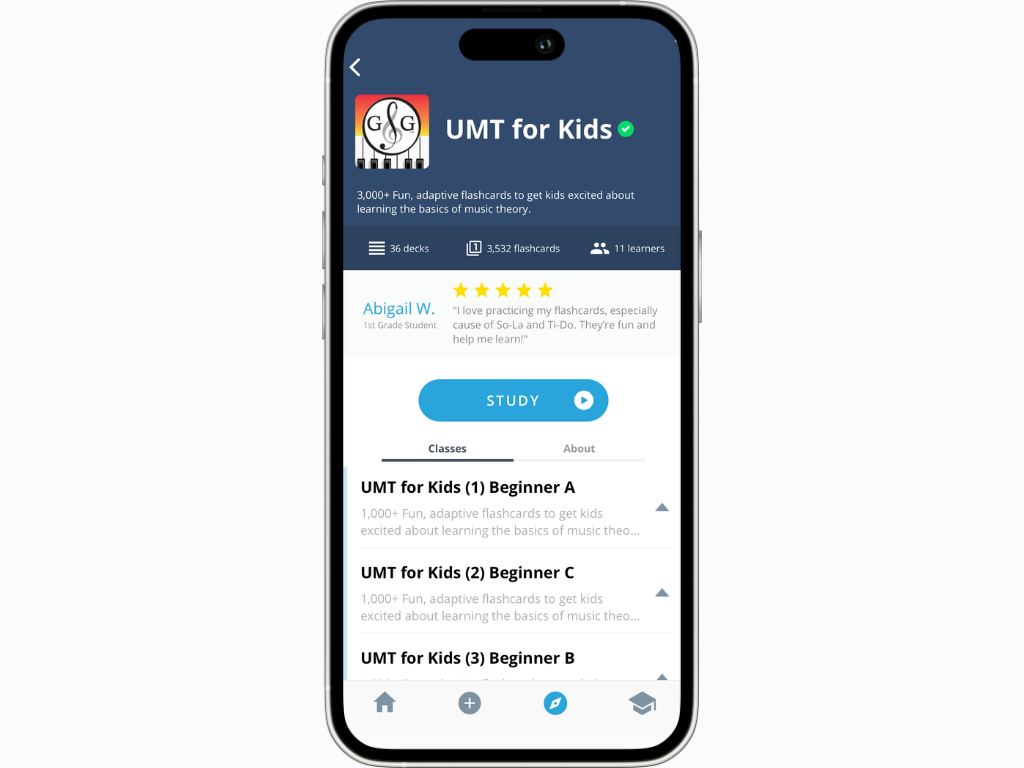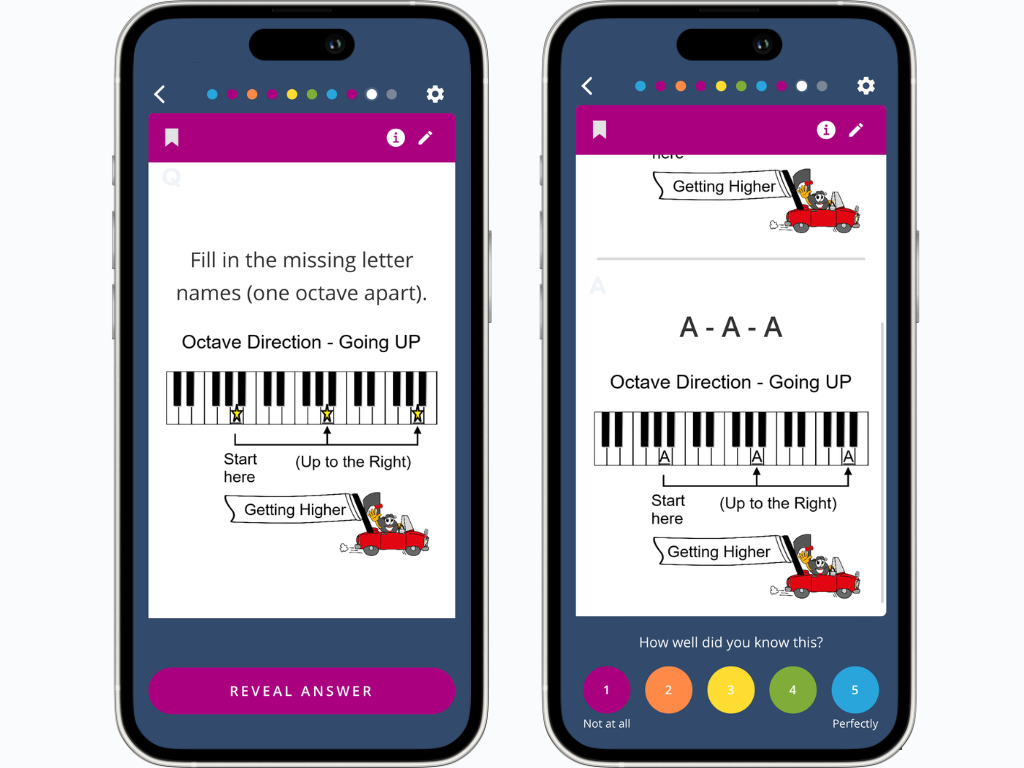Any parent or teacher who has ever tried to teach music theory to young kids will understand this one unfortunate fact: music theory = boring. Or at least that’s what the kids seem to think. And it’s true because I was once one of those young kids trying to learn music theory under the tutelage of a very talented and enthusiastic teacher. Still, I found music theory a *total* bore.
Here’s the thing: hundreds of millions of kids all over the world learn to do math and if they can do that, they can easily learn music theory!
In this article, I’ll show you how to teach music theory to kids without curdling their brains with boredom. Thus, you—their poor parents or teacher—will save yourself from the frustration of trying to keep them engaged.
Why teach music theory to kids when they can just learn the physical skill of playing an instrument?
Look, I hear you.
Like I said, when I was a kid, I would sooner have eaten a bowl of Brussels sprouts than sit through a music theory lesson. But put me in front of a piano and I would happily tinker away for hours. In fact, that’s just what I did and I became pretty good at it!
But I hit a ceiling and soon became frustrated at my inability to play more complex songs. With time and great struggle, I could figure out the melody by ear but not replicate the more intricate chords. Sheet music would have told me how to do that and without the strain of figuring it out by myself.
This is the value of learning music theory from a young age, concurrent with their practical mastery of a musical instrument. Music theory unlocks a kid’s ability to read and write music, which allows them to progress much quicker in their practical mastery than I did.
Take my word for it. Learning music theory is worth it.
How to teach music theory to kids
The first indispensable ingredient in teaching music theory is the right tools for the job: a curriculum and workbooks to guide your teaching. If you’re already a music teacher, you’ll be aces away on this point (and you can skip straight to our first tip below) but if you’re a parent without a music classroom, you’ll need the right intellectual equipment:
Ultimate Music Theory (UMT) has a comprehensive collection of music theory workbooks designed to teach music theory to kids. (Use the code BRAINSCAPE at check-out to get 15% off.) They’ve also crafted a complete collection of engaging digital flashcards to really ingrain these lessons in kids (more on these later).
With these workbooks and flashcards—and your kids’ chosen musical instrument(s)—you should have the tools you need to embark upon their music theory learning journey.
Now, let’s look at THREE immediately actionable tips for teaching music theory to kids…
[Psssst! If you need it, here’s some advice on how to teach young kids at home.]
Tip # 1: Keep music theory lessons relatively short
Kids naturally have a short attention span when it comes to the more analytical, theory-based tasks that require concentration, so scheduling hour-long music theory lessons is only going to bore them and frustrate you.
My advice is to schedule 15-20 minute music theory lessons interspersed with more hands-on skills. In other words, try to interleave theoretical learning with the practical enjoyment of music, whether that involves singing/playing or listening to music or both.
(There’s a nifty tool I’ll talk about in just a bit that makes “bite-sized” music theory lessons like this ridiculously easy to fall in and out of as you teach your kids or students music.)
Remember: little ones can happily spend hours playing games or with their toys. They are fully capable of long periods of concentration! But because music theory engages the more language-based / mathematical parts of their brains, their concentration naturally runs out quite a bit sooner than it does with fun, creative activities.
Keep those music theory lessons short and sweet to really optimize their impact.
Tip # 2: Use fun, engaging apps for music theory
When I was learning music theory as a kid, the workbooks I was given to learn from had the same pharmaceutical action as nighttime cold medicine. I still remember their gray-and-white branding and black-and-white pages of text. Nary an illustration in sight, aside from the expected music notations.
Today, however, parents and music theory teachers have options! And these options are specifically tailored to keep kids super engaged through their colorful branding, intriguing cast of characters, and interactive exercises. (Just take a look at UMT’s music theory workbooks!)
But more than just blinding kids with colors, there are some really helpful apps for music theory that not only pack the content needed to teach kids everything they need to know but also have the delivery of that content down to a fine art (and cognitive science).
Brainscape is just one such app for music theory. What music teachers like about this flashcard app is that it breaks down the recommended music theory curriculum for young kids into a neatly organized collection of smart, adaptive flashcards that starts with UMT for Kids, Beginner A, progresses to Beginner B, and culminates in Beginner C. (Thereafter, you can work through UMT's Prep 1 flashcards, followed by Music Theory for older kids and adults.)

Every flashcard contains illustrations of characters that kids love. And the design of the app is very interactive, requiring kids to engage with each flashcard, paralleling a game-like experience that organically extends their attention span.

Additionally, with the app delivering content in 10-flashcard rounds, it’s the perfect vehicle for short, punchy study sessions between the more fun tasks of making music, which is what I was referring to earlier.
In short, Brainscape makes the learning journey as fast, efficient, and painless as humanly possible, not only for kids but for their parents and educators, too. Plus, they’ll love the time spent with you.
Bottom line: make learning music theory fun, using whatever tools you have at your disposal, especially Brainscape. (Check out our guide on how to use Brainscape with your kids.)
Tip # 3: Create the need to learn music theory
Learning the language of reading and writing music rips the lid off your kids’ creativity, making it much easier to learn new songs and even write their own melodies. If you, as a parent or teacher, can help them understand this “why” of learning music theory, you’ll feed into their intrinsic motivation to sit through the drier aspects of their lessons.
How do you do that?
Well, you can explain to them in words the value of learning music theory but, of course, we know how long that’ll last. Instead, they need to feel the need to understand. The human brain is biologically wired to WANT to learn when it feels the burn of the knowledge gap.
The burn of the knowledge gap is caused when your kid tries to play a piece of music, mimic a rhythm, or answer a music theory flashcard… but their current knowledge or skill level is just beneath the level of them being able to do so.
That last part is important: the challenge shouldn’t be impossible for them, but if it’s just a little bit harder than their current abilities, they’ll experience a powerful drive to bridge that gap so that they CAN play that music, follow the beat, or answer the flashcard.
To create that need, make sure that:
- Their music theory lessons are based upon a robust foundation of practical application and experience. If they’re not moving their hands, touching an instrument, or engaging their voice while learning, you’ll have minutes before they zone out;
- You constantly challenge them with music that is just a little bit harder than what they’re used to so that they feel the burn of the knowledge gap, motivating them to pay closer attention to their music theory lessons.
- They have frequent opportunities to perform for others, whether it's family and friends or participating in school concerts or recitals. Sure, it can be nerve-wracking, but young kids who are accustomed to frequent performance are resilient, have greater confidence, and get to enjoy that electric sense of accomplishment!
The inexorable reality is that music theory is a tool and a language that enhances your child’s ability to enjoy, learn, and make music. The more your kids experience the need to have a system for reading and writing music, the more committed they’ll be to learning it.
And when they’re very young, it’s up to you as their parent or music teacher to create that need.
A final word on teaching kids music theory
Teaching your kids music theory is not only beneficial for the progression of their practical music skills but it can also be a lot of fun if you have the right tools, like Brainscape's adaptive music theory flashcards for kids. Or...
So even if you can’t play an instrument yourself, don't let that stop you from sharing the gift of music with your little ones. By incorporating music into their lives, you can help them develop their cognitive, emotional, and social skills while fostering creativity, self-expression, and a love of learning.
And remember, with the Brainscape Ultimate Music Theory flashcard collection, you can painlessly drill your child on the music theory they need to rise to their challenge!
Other resources for parents or teachers of young kids:
- Flashcards for Early Childhood Education to help kids learn the basics of math, literacy, and more.
- Brainscape’s Academy for parents, loaded with free guides on advancing your kids' education.
- Free study planner and class schedule sheets for parents teaching their kids at home.
- The 7 best educational blogs every teacher should read for a library of actionable advice and validation that, yes, you're doing an amazing job!
